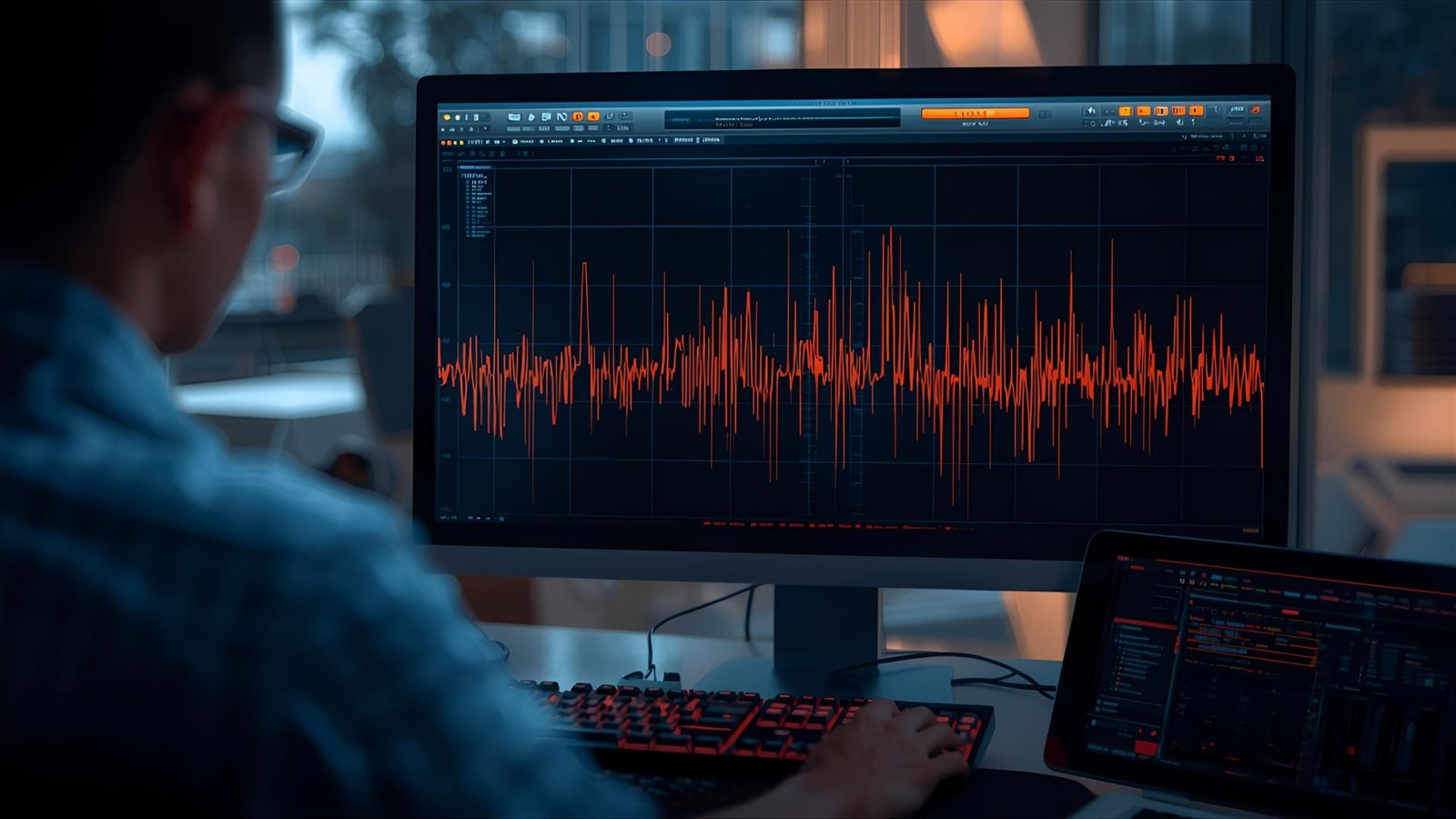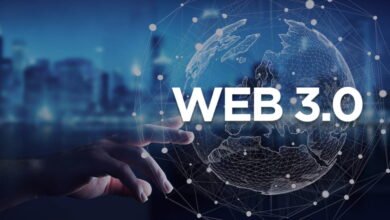AI-first Web3 platform to help traders separate signals from the noise
Discover how AI-first Web3 platforms revolutionize crypto trading by filtering market noise, providing intelligent signals, and enhancing trader decision-making with advanced algorithms.

The cryptocurrency and Web3 trading landscape has become increasingly complex, with thousands of digital assets, countless market indicators, and an overwhelming flood of information bombarding traders daily. In this chaotic environment, distinguishing valuable trading signals from mere market noise has become the holy grail for both novice and experienced traders. Enter AI-first Web3 platforms – sophisticated technological solutions designed to harness artificial intelligence and machine learning capabilities to help traders navigate the turbulent waters of decentralized finance (DeFi) and cryptocurrency markets.
These revolutionary platforms represent a paradigm shift in how traders approach market analysis, risk management, and investment decisions. By leveraging cutting-edge artificial intelligence algorithms, advanced data processing capabilities, and real-time market analysis, these platforms are transforming the trading experience from guesswork-based decisions to data-driven strategies. The integration of AI with Web3 technology creates unprecedented opportunities for traders to access intelligent insights, automated trading strategies, and sophisticated risk management tools that were previously available only to institutional investors.
The emergence of AI-powered trading platforms addresses one of the most persistent challenges in cryptocurrency trading: information overload. Traditional trading platforms often present users with raw data, basic charts, and fundamental analysis tools, leaving traders to interpret complex market dynamics on their own. This approach frequently results in emotional decision-making, FOMO-driven trades, and significant financial losses. AI-first platforms, however, process vast amounts of market data, social sentiment, technical indicators, and macroeconomic factors to provide traders with clear, actionable insights that cut through the noise and focus on genuine opportunities.
AI-First Web3 Architecture
AI-first Web3 platforms are built on decentralized infrastructure that combines the transparency and security of blockchain technology with the analytical power of artificial intelligence. These platforms utilize sophisticated machine learning models trained on massive datasets encompassing price movements, trading volumes, market sentiment, social media trends, news events, and technical indicators. The AI systems continuously learn and adapt to changing market conditions, improving their predictive accuracy over time.
The architecture typically includes multiple layers of data processing, starting with raw market data collection from various exchanges, DeFi protocols, and external sources. This information is then processed through neural networks and advanced algorithms that identify patterns, correlations, and anomalies that human traders might miss. The processed insights are presented through intuitive interfaces that translate complex algorithmic analysis into easily understandable trading recommendations and market insights.
Core Components of AI-Driven Trading Systems
Artificial intelligence trading systems incorporate several essential components that work together to deliver superior market analysis. Data aggregation engines collect information from hundreds of sources simultaneously, including centralized exchanges, decentralized exchanges, social media platforms, news outlets, and on-chain analytics providers. This comprehensive data collection ensures that the AI has access to the full spectrum of market-influencing factors.
Natural language processing (NLP) capabilities allow these platforms to analyze news articles, social media posts, regulatory announcements, and community discussions to gauge market sentiment and identify emerging trends. This sentiment analysis provides valuable context for price movements and helps traders understand the underlying factors driving market behavior.
Predictive modeling algorithms use historical data and current market conditions to forecast potential price movements, identify support and resistance levels, and predict market volatility. These models continuously refine their predictions based on new data and outcomes, improving their accuracy over time.
Advanced Signal Processing and Noise Reduction

One of the most significant advantages of AI-first Web3 platforms is their ability to filter out market noise and focus on genuine trading signals. Traditional technical analysis relies on predetermined indicators and patterns that may not account for the unique characteristics of cryptocurrency markets. AI-powered systems, however, can identify subtle patterns and correlations that human analysis might overlook.
Signal processing algorithms analyze multiple timeframes simultaneously, identifying short-term opportunities while maintaining awareness of longer-term trends. This multi-dimensional analysis helps traders avoid the common pitfall of focusing too narrowly on single indicators or timeframes. The AI can distinguish between temporary market fluctuations and meaningful trend changes, providing traders with more reliable entry and exit signals.
Real-Time Market Analysis Capabilities
Real-time market analysis represents a crucial advantage of AI-powered trading platforms. These systems can process and analyze market data within milliseconds, identifying opportunities and risks as they emerge. This speed advantage is particularly important in the fast-moving cryptocurrency markets, where price movements can be swift and dramatic.
The platforms utilize streaming data processing techniques to continuously monitor market conditions, updating their analysis and recommendations in real-time. This continuous monitoring ensures that traders have access to the most current information and can respond quickly to changing market dynamics.
Anomaly detection algorithms identify unusual market behavior that might indicate manipulation, major news events, or emerging trends. This capability helps traders avoid potential traps and identify genuine opportunities before they become widely recognized by the market.
Machine Learning and Adaptive Intelligence
The machine learning capabilities of AI-first Web3 platforms set them apart from traditional trading tools. These systems employ various ML techniques, including supervised learning, unsupervised learning, and reinforcement learning, to continuously improve their performance and adapt to changing market conditions.
Supervised learning models are trained on historical market data with known outcomes, learning to recognize patterns that have previously led to successful trades or market movements. These models can then apply their learned knowledge to current market conditions, identifying similar patterns and opportunities.
Unsupervised learning algorithms discover hidden patterns and relationships in market data without prior knowledge of outcomes. This capability is particularly valuable for identifying new market dynamics, emerging correlations, and previously unknown factors that influence price movements.
Reinforcement Learning for Strategy Optimization
Reinforcement learning represents the cutting edge of AI trading technology, where algorithms learn optimal trading strategies through trial and error, continuously refining their approach based on outcomes. These systems can adapt to changing market conditions, adjusting their strategies to maintain effectiveness even as market dynamics evolve.
The reinforcement learning process involves the AI system making trading decisions, observing the outcomes, and adjusting its decision-making process to improve future performance. This continuous learning cycle ensures that the platform becomes more effective over time, adapting to new market conditions and trader preferences.
Risk Management and Portfolio Optimization
Risk management is a critical component of successful trading, and AI-first Web3 platforms excel in this area by providing sophisticated risk assessment and mitigation tools. These platforms analyze portfolio composition, correlation between assets, market volatility, and individual risk tolerance to provide personalized risk management recommendations.
Portfolio optimization algorithms help traders achieve optimal asset allocation based on their risk profile, investment goals, and market conditions. The AI considers factors such as correlation between different cryptocurrencies, historical volatility, and expected returns to suggest portfolio adjustments that maximize returns while minimizing risk.
Dynamic Risk Assessment
Dynamic risk assessment capabilities allow the platform to continuously monitor and adjust risk levels based on changing market conditions. As volatility increases or market sentiment shifts, the AI can recommend position adjustments, stop-loss modifications, or portfolio rebalancing to maintain appropriate risk levels.
The platforms utilize Value at Risk (VaR) models, stress testing scenarios, and Monte Carlo simulations to provide comprehensive risk analysis. This sophisticated risk modeling helps traders understand potential losses under various market scenarios and make informed decisions about position sizing and risk exposure.
Integration with DeFi and Web3 Ecosystem

DeFi integration represents a significant advantage of AI-first Web3 platforms, enabling traders to access decentralized trading opportunities, yield farming protocols, and liquidity mining programs. The AI can analyze DeFi protocols, assess their risk-return profiles, and identify optimal strategies for maximizing returns while managing risks.
Smart contract analysis capabilities allow the platform to evaluate the security and functionality of DeFi protocols before recommending them to users. This analysis includes code audits, liquidity assessments, and risk evaluations to ensure that users are aware of potential vulnerabilities or risks.
Cross-Chain Analysis and Opportunities
Cross-chain trading opportunities are identified and analyzed by AI algorithms that monitor multiple blockchain networks simultaneously. This capability enables traders to take advantage of arbitrage opportunities, cross-chain yield farming strategies, and multi-chain investment opportunities.
The platforms can analyze gas fees, transaction speeds, and liquidity across different chains to recommend optimal trading routes and strategies. This cross-chain analysis ensures that traders can access the best opportunities regardless of which blockchain they originate from.
User Experience and Interface Design
User experience is a crucial factor in the success of AI-first Web3 platforms. These platforms must balance sophisticated analytical capabilities with intuitive interfaces that make complex information accessible to traders of all experience levels. Advanced data visualization techniques, customizable dashboards, and intelligent notifications help users understand and act on AI-generated insights.
Personalization algorithms learn individual user preferences, trading styles, and risk tolerance to provide customized recommendations and interface configurations. This personalization ensures that each trader receives relevant information and insights tailored to their specific needs and goals.
Mobile and Multi-Platform Accessibility
Mobile trading capabilities ensure that users can access AI-powered insights and execute trades from anywhere. The platforms optimize their algorithms and interfaces for mobile devices, providing full functionality without compromising on analytical capabilities or user experience.
API integration allows advanced users to connect the AI platform with their preferred trading tools, portfolio management software, and automated trading systems. This flexibility ensures that the AI insights can be integrated into existing trading workflows and strategies.
Future Developments and Market Impact
The future of AI-first Web3 platforms promises even more sophisticated capabilities, including advanced natural language interfaces, predictive market modeling, and autonomous trading agents. These developments will further democratize access to institutional-grade trading tools and insights.
Quantum computing integration represents a potential future enhancement that could dramatically increase the processing power and analytical capabilities of these platforms. Quantum algorithms could solve complex optimization problems and analyze vast datasets in ways that are currently impossible with classical computing.
Industry Transformation and Adoption
The adoption of AI-powered trading platforms is expected to accelerate as more traders recognize the advantages of data-driven decision-making. This adoption will likely drive further innovation and competition in the space, leading to more sophisticated tools and better user experiences.
Institutional adoption of these platforms is also increasing, as traditional financial institutions recognize the value of AI-powered market analysis and risk management tools. This institutional interest is driving further development and legitimizing the use of AI in trading and investment management.
For More: Best Web3 Software App Complete Guide Top 20 Decentralized Tools 2025
Conclusion
AI-first Web3 platforms represent a revolutionary advancement in cryptocurrency and decentralized finance trading, offering unprecedented capabilities for signal detection, noise reduction, and intelligent decision-making. These platforms harness the power of artificial intelligence, machine learning, and blockchain technology to provide traders with sophisticated tools that were previously available only to institutional investors.
The combination of real-time market analysis, advanced risk management, and personalized insights creates a trading environment where data-driven decisions replace emotional reactions and guesswork. As these platforms continue to evolve and improve, they will play an increasingly important role in the maturation and sophistication of the Web3 trading ecosystem.




